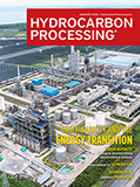Glocal Green, Norwegian Hydrogen to build large-scale bio-eMethanol facility in Norway
The size of the facilities may vary, but Glocal Green believes that the optimal size is about 100,000 tpy. This corresponds to a raw material requirement per facility of approx. 80,000 t of biomass and up to approx. 10,000 t of green hydrogen. The combination allows every energy substance in the biomass to be utilised and transited in a very efficient way.
“We are currently working on the engineering design process, and construction is expected to start in 2023. Thus, the first deliveries of methanol are planned to take place in 2024,” Ryste continues.
The supply of hydrogen will double productivity
Bio-methanol produced from biomass combined with the supply of green hydrogen will have a very positive effect on the production and volume of this highly efficient liquid energy and hydrogen carrier. In fact, to such an extent that if you connect an electrolysis facility at the methanol factory, productivity will be approximately doubled. The product obtained when mixing green hydrogen into the bio-methanol production process is called bio-e-methanol, and this is where Norwegian Hydrogen comes into the picture.
Norwegian Hydrogen has already announced a number of projects and collaboration agreements relating to their core area – green hydrogen with zero emissions. They clearly see that their product will not only be in demand on vessels and vehicles as energy carriers in the form of pure hydrogen, but also by those developing other forms of zero-emission and low-emission fuels.
"This is one of the things that makes the possibilities of green hydrogen so exciting," says Jens Berge at Norwegian Hydrogen.
“You can compress it and use the gas as fuel, cool it down so it is in liquid form, add nitrogen and obtain ammonia, and, as described here; enrich already hydrogen-rich bio-methanol to obtain bio-e-methanol. All hydrogen-rich products to replace fossil alternatives.
The companies now wants start the dialogue about Glocal Green's first factory on Øyer, and establish a plan to locate an electrolysis facility in close proximity to this. Norwegian Hydrogen wants to produce significant amounts of hydrogen for distribution from this facility, so that in addition to meeting Glocal Green's needs of up to 10,000 tonnes annually, they can sell standard compressed hydrogen to other customers in Eastern Norway, either delivered in containers or via their planned filling stations and bunkering facilities.






Comments